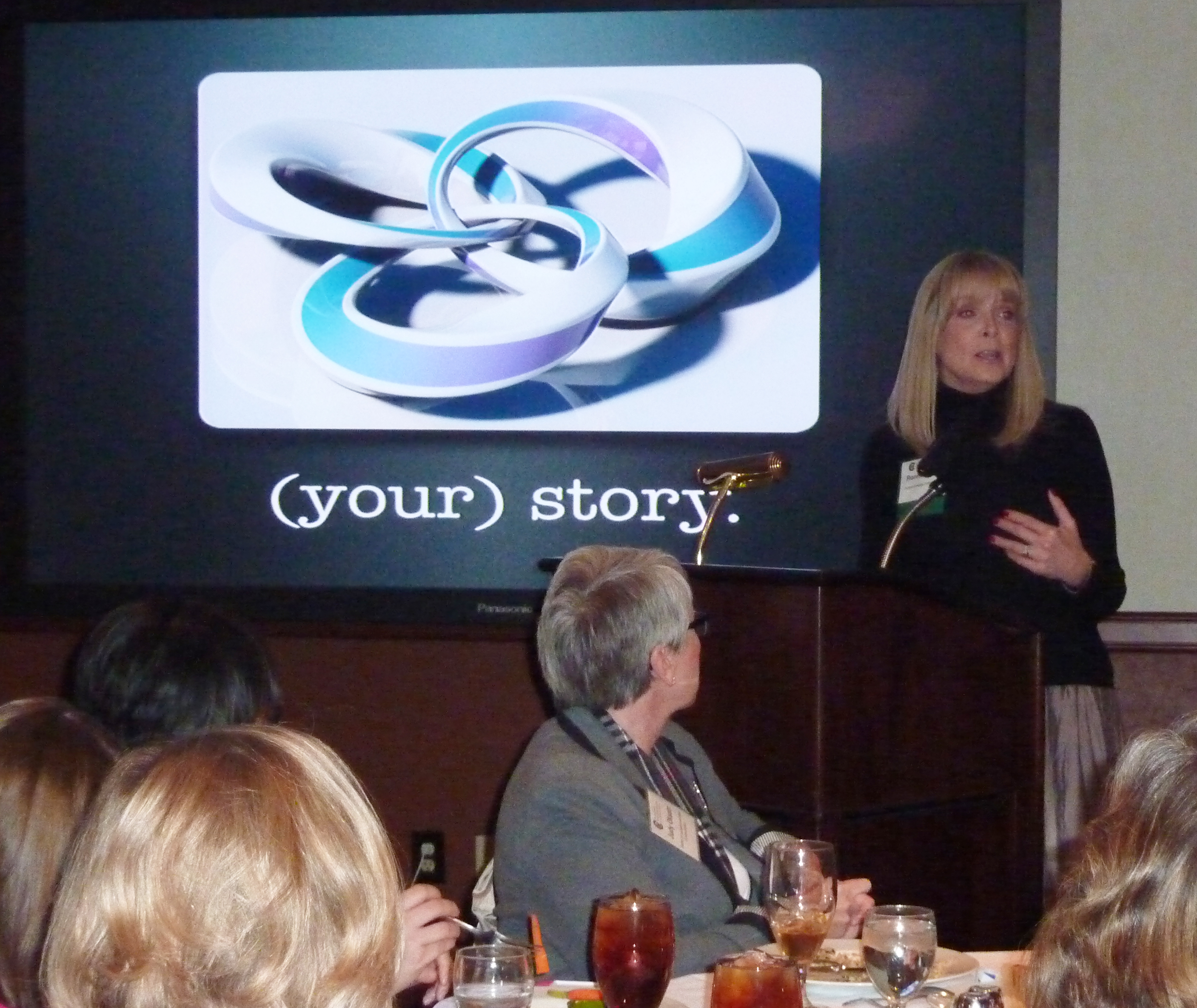This month’s AWC Austin luncheon with Ronne Rock focused on building a brand through storytelling. Ronne kicked off the lunch by sharing her personal story and background, and then reminded us that – much like a business or brand – we are each a story that’s still being written.
Ronne explained that a brand isn’t just a logo, a tagline, a target market, or even the product or serviced offered. Rather, a brand is about the greatest successes and worst blunders. It should reinforce a promise or pledge. Most importantly, it’s living and active.
If the connection point isn’t there for the customer, a brand won’t last. Tangibles can always be trumped; another company can develop something bigger, better, cheaper, etc. But customer testimony or impact can’t be beat because it’s what builds a bridge between the business and its customers.
Emotional connection can drive your brand story. Ronne’s example: shortly after the Sandy Hook massacre, she noticed the faith-based website she monitors received three times the amount of traffic. The deeper story? Those visitors were looking for hope, for a connection, for that intangible. It’s then up to you as a brand to embrace them and let them into your story.
Blockbuster is another great example. Blockbuster executives had spreadsheets chock full of metrics and goals, but ultimately their customer base drove the brand experience. They’re how “Make it a Blockbuster Night” came around. It became about renting a movie, grabbing snacks, and making it a date night, a girls’ night, or a family night.
Here are Ronne’s five ways to weave the intangible into your brand strategy:
- Language
- Imagery
- Merchandising
- Marketing
- Service (and customer service)
A brand is only as good as the people who buy into it and the base of employees who also act as ambassadors. It should be accessible in a relevant way – think of it as extending an invite and having customers join you in the brand experience.
Ultimately, a brand is the impact of these intangibles on people’s lives. The brand story isn’t governed by budgets or spreadsheets, but can be worked into a marketing plan. What would happen if the intangibles became more important than the price point or goals in building your brand?
Thank you to Ronne Rock for sharing her brand knowledge with us in such an engaging way!
- February Luncheon Recap: Green PR - February 28, 2013
- January luncheon recap: Sharing your brand promise through storytelling - January 29, 2013
- November luncheon recap: Energizing your creativity - November 19, 2012


